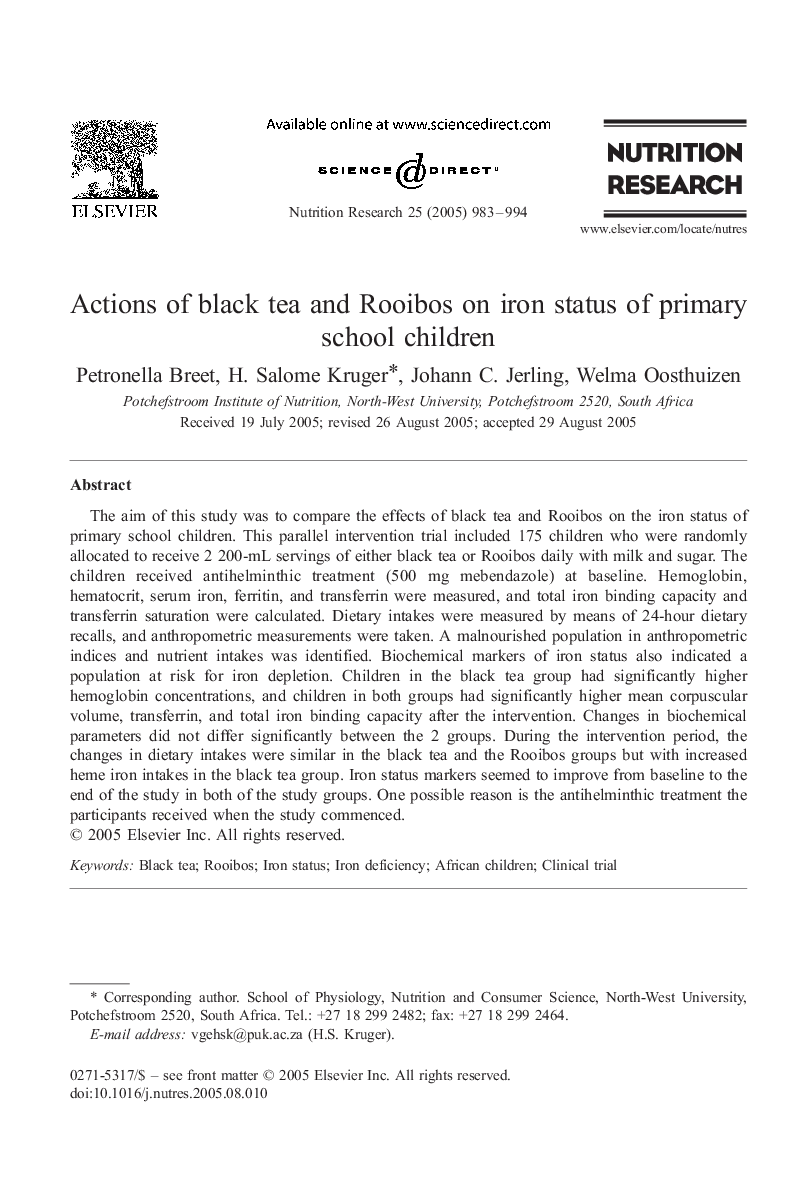| Article ID | Journal | Published Year | Pages | File Type |
|---|---|---|---|---|
| 9118963 | Nutrition Research | 2005 | 12 Pages |
Abstract
The aim of this study was to compare the effects of black tea and Rooibos on the iron status of primary school children. This parallel intervention trial included 175 children who were randomly allocated to receive 2 200-mL servings of either black tea or Rooibos daily with milk and sugar. The children received antihelminthic treatment (500 mg mebendazole) at baseline. Hemoglobin, hematocrit, serum iron, ferritin, and transferrin were measured, and total iron binding capacity and transferrin saturation were calculated. Dietary intakes were measured by means of 24-hour dietary recalls, and anthropometric measurements were taken. A malnourished population in anthropometric indices and nutrient intakes was identified. Biochemical markers of iron status also indicated a population at risk for iron depletion. Children in the black tea group had significantly higher hemoglobin concentrations, and children in both groups had significantly higher mean corpuscular volume, transferrin, and total iron binding capacity after the intervention. Changes in biochemical parameters did not differ significantly between the 2 groups. During the intervention period, the changes in dietary intakes were similar in the black tea and the Rooibos groups but with increased heme iron intakes in the black tea group. Iron status markers seemed to improve from baseline to the end of the study in both of the study groups. One possible reason is the antihelminthic treatment the participants received when the study commenced.
Related Topics
Life Sciences
Biochemistry, Genetics and Molecular Biology
Endocrinology
Authors
Petronella Breet, H. Salome Kruger, Johann C. Jerling, Welma Oosthuizen,
